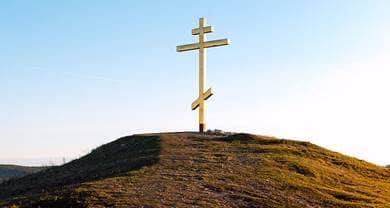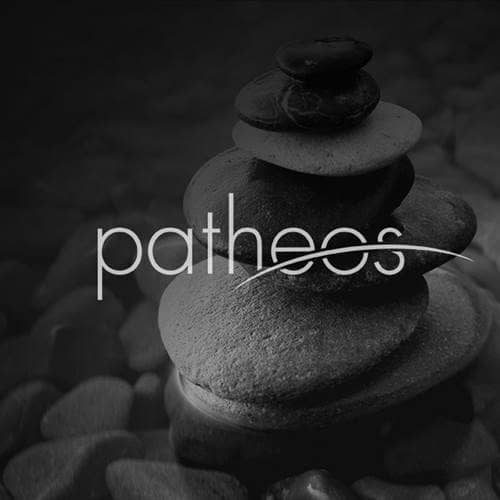- Trending:
- Pope Leo Xiv
- |
- Israel
- |
- Trump
- |
- Social Justice
- |
- Peace
- |
- Love

RELIGION LIBRARY
Eastern Orthodoxy
Community Organization
As is the case with all the major denominations of Christianity, Eastern Orthodoxy emphasizes the communal nature of Christian life. The Church is the body of Christ, experiencing an ongoing Pentecost whenever the community gathers in worship and prayer. In addition, Eastern Orthodoxy stresses a conciliar style of community organization. No single bishop or other authority runs the church. Instead, bishops meet in councils, also called synods, to reach binding agreements through consensus.
Eastern Orthodoxy uses an organizational structure in which each of fifteen Orthodox churches are autocephalous, or independent and self-governing. All fifteen are united in common understanding and follow the same canon law, despite differences of language and culture. They are in full communion with each other, meaning that they agree in matters of doctrine and church administration, share the same liturgy, and share in all of the sacraments. In Eastern Orthodox doctrine, this relationship expresses the Trinitarian mystery of unity in diversity.
All bishops are equal, yet the four patriarchates of Jerusalem, Antioch, Alexandria, and Constantinople receive special respect for their status as ancient sees. Orthodoxy continues to use the name Constantinople, even though Constantinople has been Istanbul since 1453. For over a thousand years, Constantinople was the capital of the Eastern Roman Empire and the central focus of the administrative life of the Church. The patriarch of Constantinople, called the ecumenical patriarch, still commands special recognition as the "first among equals," a position of honor, but he does not have jurisdiction or any other authority over the autocephalous churches.
The sister churches of Eastern Orthodoxy roughly correspond to geographical and national centers that are ranked in a traditional order of precedence. The highest-ranking churches are the four ancient patriarchates—Constantinople, Alexandria, Antioch, and Jerusalem. The heads of these churches are called patriarchs, after a Greek word meaning head of the family. The patriarch of Constantinople has a small congregation in Turkey, but most of his congregation resides in Crete, and the U.S., Australia, and western Europe. The patriarchate of Alexandria presides over the entire African continent, and includes Greek-speaking Christians along with Kenyans, Ugandans, and Tanzanians. The patriarchate of Antioch includes Syria and Lebanon, and its members are Arabs. The patriarchate of Jerusalem's clergy tend to be Greek, while its members are Arabs. The next churches in rank are the autocephalous churches of Russia, Serbia, Romania, Bulgaria, Georgia, Cyprus, Greece, Poland, Albania, Czech Lands and Slovakia, and the Orthodox Church in America (OCA). The OCA is included here although it is not yet recognized by all the Orthodox churches.
The last churches in rank are not autocephalous. The churches of Sinai, Finland, Estonia, Japan, China, and Ukraine are not yet fully self-governing, and are referred to as autonomous, each of them dependent on an autocephalous church. The Church of Sinai depends on the patriarchate of Jerusalem. The Churches of Finland and Estonia rely on the patriarchate of Constantinople. The Churches of Japan and Ukraine rely on the Moscow patriarchate. The state of the Orthodox Church in China is unknown, but was believed to have 20,000 members before the Cultural Revolution. The Churches of Estonia, Japan, China, and Ukraine are not yet universally recognized by all Eastern Orthodox churches.
In the mystical approach typical of Eastern Orthodoxy, the church is understood as an icon of God, the Holy Trinity. The Trinity is described as a mystical indwelling of three persons—Father, Son, and Holy Spirit—in one God, a wonderful divine mystery of unity in diversity. The church embodies this mystery, in which each Christian is a distinctly independent individual, yet the aggregate community of all Christians is united as one, a communion comprised of all Christians, past, present, and future. Participation in this "communion of saints" gives the Christian insight into the mystery of the Trinity.
The Trinitarian doctrine of the church underlines the Orthodox emphasis on the importance of church councils. Because all Christians are one in the body of Christ, ultimate decisions about matters of faith and practice can only properly be made by a gathering of the representatives of all the churches. No one bishop has more authority than another in the body of Christ, but when all are gathered together, as they were on the day of Pentecost, then they are able to freely reach common agreement through the presence of the Holy Spirit.
Study Questions:
1. Describe the role of the spirit of Pentecost within the church’s community organization.
2. Is there a hierarchy of power within the church’s leadership? How?
3. What is the role of location in determining community structure?
4. How does the Trinitarian doctrine influence community organization?










